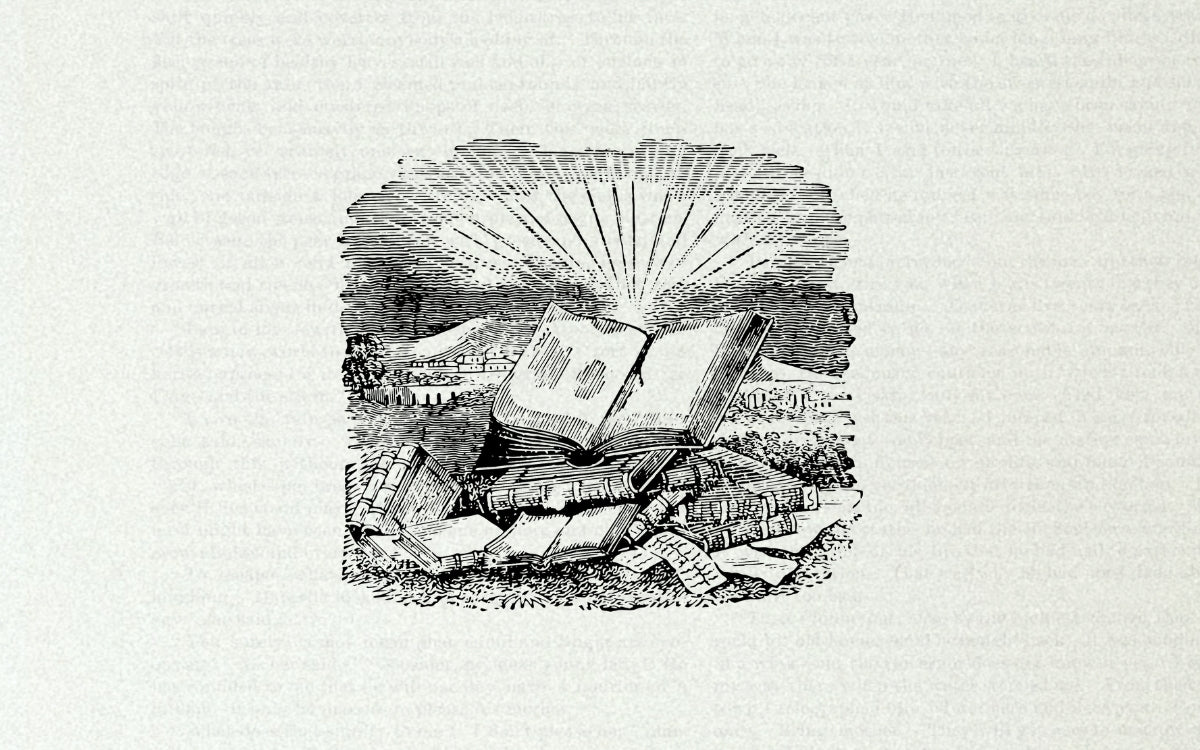The Bullet Journal method is a system that combines elements of mindfulness, productivity, and self-discovery. It empowers you to become the author of your own life, allowing you to track the past, organize the present, and plan for the future.
You’ll often hear the Bullet Journal method be described as a productivity system or an organization system, but at its core, the method is a tool for changing the way we approach our day-to-day tasks and long term goals. The Bullet Journal method is centered on one key idea: intentionality. Why do we do what we do? What makes these goals meaningful to us? What tasks are the most relevant to us at any given point in time?
The Bullet Journal Method’s Origins
The Bullet Journal method started out as a personal organization method to help Ryder Carroll, the method’s creator, stay on top of tasks and document ideas. Through experimentation and continuous refinement, Ryderdeveloped the Bullet Journal method as a tool to help with his attention deficit hyperactivity disorder (ADHD). He combined elements of mindfulness, productivity techniques, and personal reflection to create a flexible system that could adapt to his evolving needs.
The primary goal of the Bullet Journal method was to provide a framework that allowed Ryder, and subsequently others, to capture and organize information quickly, prioritize tasks effectively, and cultivate a deeper connection with their own aspirations and values.
Later on, Ryder realized that the Bullet Journal method could be useful to other people struggling with the same issues he had struggled with, regardless of whether they had ADHD or not.
How does the Bullet Journal method work?
The Bullet Journal method works by letting you capture and organize tasks, events, and thoughts efficiently in a process known as rapid logging. Rapid logging is the heart of the Bullet Journal method. It functions by using short, bulleted entries to indicate what something in your list is and at what stage of completion it’s at.
Rapid Logging
Rapid logging is the language of the BuJo method and it functions through the use of Bullets to indicate a task’s status. Start with a simple dot (•) to represent a task. If a task is completed, mark it with an "X." If it's migrated to a future date, use a right arrow (>) to indicate that. Similarly, use different symbols for events, notes, and other relevant categories. You can change the bullets you use depending on what makes sense for you, but generally, those are the common ones that most Bullet Journalists use.
Tasks within the Bullet Journal method can then fall within any of the logs you use depending on where they fall in your timeline. Typically, you can expect to use a Daily Log, Weekly Log, and Monthly Log.
Daily Log
The daily log is where you record your tasks, events, and notes on a day-to-day basis. To create a daily log, simply write down the current date as the header and start logging your entries. You can use short, bulleted entries with symbols to represent different types of content (tasks, events, notes).
When new tasks arise throughout the day, add them to your daily log. If a task is completed, mark it with an "X." If a task is not completed and you still want to work on it, you can migrate it to a future date by using a right arrow (→) to indicate that. This way, you maintain a concise and up-to-date record of your daily activities.
Weekly Log
The weekly log provides an overview of your week, allowing you to plan and organize your tasks, events, and commitments in a broader context. To create a weekly log, designate a double-page spread in your notebook for each week.
Write the dates of the week at the top of the left-hand page and use it to jot down any time-specific events or appointments. On the right-hand page, create a list of tasks and notes for the week, using bulleted entries. You can migrate unfinished tasks to the next week as needed.
The weekly log serves as a snapshot of your upcoming week, helping you prioritize tasks, allocate time, and have a holistic view of your commitments.
Monthly Log
The monthly log offers a broader perspective, enabling you to plan and track your activities, goals, and events throughout the month. To create a monthly log, designate a double-page spread in your notebook for each month.
On the left-hand page, write the name of the month at the top and list the dates (1-30/31) down the side. Use this space to mark important events, deadlines, or appointments for each day. On the right-hand page, create a monthly task list, where you can list out tasks, goals, or projects you want to focus on during the month.
The monthly log serves as a reference point, allowing you to see the big picture and plan ahead. As the month progresses, you can refer to this log, migrate tasks to specific days in your daily log or add new tasks as they arise.
BuJo vs. Journal vs. Planner
On the surface, journals and planners look like they are the same system as the Bullet Journal method, but a key difference that the Bullet Journal method has from journals and planners is how flexible it is without losing structure.
Unlike a planner, the Official Bullet Journal notebook does not lock you into fixed dates. There’s room to move tasks around, especially if your daily needs or energy levels change. Even with that flexibility, the Bullet Journal method remains structured enough to allow for reflection without descending into rumination.
Here’s a quick overview to help you see the differences between these three organization methods:
Planner vs. Bullet Journal
A planner is a pre-designed, structured tool specifically created for scheduling and time management. Planners provide a ready-made structure and can be useful for individuals who prefer a more standardized approach to organizing their schedules and tasks without much customization.
Unlike the Bullet Journal method, planners often have set durations and limited flexibility for reusing unused pages, whereas the Bullet Journal method seamlessly accommodates any time period. While planners primarily focus on scheduling and task management, the Bullet Journal method goes beyond organization to incorporate mindfulness, reflection, and personal growth.
Journal vs. Bullet Journal
A journal is a blank notebook or diary where you can freely write, express your thoughts, emotions, and experiences. It serves as a space for reflection, creative expression, and personal exploration. Journals are often used for writing narratives, recording memories, practicing gratitude, setting goals, or engaging in other forms of self-expression.
Unlike the Bullet Journal method and planners, journals typically do not have specific organizational structures or templates. They allow for complete freedom and individual interpretation in terms of content, format, and layout.
Ways You Can Benefit from the Bullet Journal Method
The Bullet Journal method offers several ways in which you can benefit from its unique approach to organization and productivity. Here are some key ways you can benefit from the Bullet Journal method:
-
It lets you organize tasks and goals for the short and long term: The Bullet Journal method helps you bring order to your tasks, events, and notes. By consolidating everything in one place, you gain a comprehensive view of your commitments and priorities. This increased organization allows for better time management and reduces the risk of forgetting or overlooking important tasks.
-
It’s a productivity booster: With the Bullet Journal method, you can optimize your productivity. By using rapid logging, prioritization techniques, and task migration, you focus on the most important tasks and efficiently move through your to-do list. This methodical approach helps you stay on track, make progress, and accomplish more.
-
It makes goal-setting manageable: The Bullet Journal method empowers you to set and track your goals effectively. By dedicating specific pages or collections to yourgoals, you break them down into actionable steps and monitor your progress.
-
It makes it easier to manage your time: The Bullet Journal method aids in better time management. By using the monthly, weekly, and daily logs, you gain a clear understanding of your schedule and can allocate time accordingly. This allows you to balance tasks, appointments, and personal activities more efficiently, reducing stress and increasing productivity.
-
It’s peaceful: The Bullet Journal method encourages mindfulness and reflection. The analog, old school format of the Bullet Journal method isn’t a flaw – it’s a feature that lets the method minimize digital distractions. That said, you can integrate your Bullet Journal with digital tools.
-
It’s yours to change: The Bullet Journal method offers a highly customizable system that you can alter to suit your needs. The method lets you create and integrate adjacent methods that build on Ryder's original ideas such as the Alastair Method and Calendex.
-
It’s a creative outlet: The Bullet Journal method provides a creative outlet for self-expression. Many Bullet Journalists add artistic elements to their journal, making it a powerful tool for showcasing creativity and integrating art into daily life.
- It reduces overwhelm and stress: The Bullet Journal method helps reduce stress by providing a structured system for managing tasks and commitments. This reduces overwhelm and allows for a more relaxed and focused mindset. The ritual-like aspect of the Bullet Journal method also makes it a meditative experience that can give you time to pause and reflect before starting or ending your day.
If you feel that the Bullet Journal method would be useful to you, you can check out our guide on how to get started with Bullet Journaling as a beginner.





